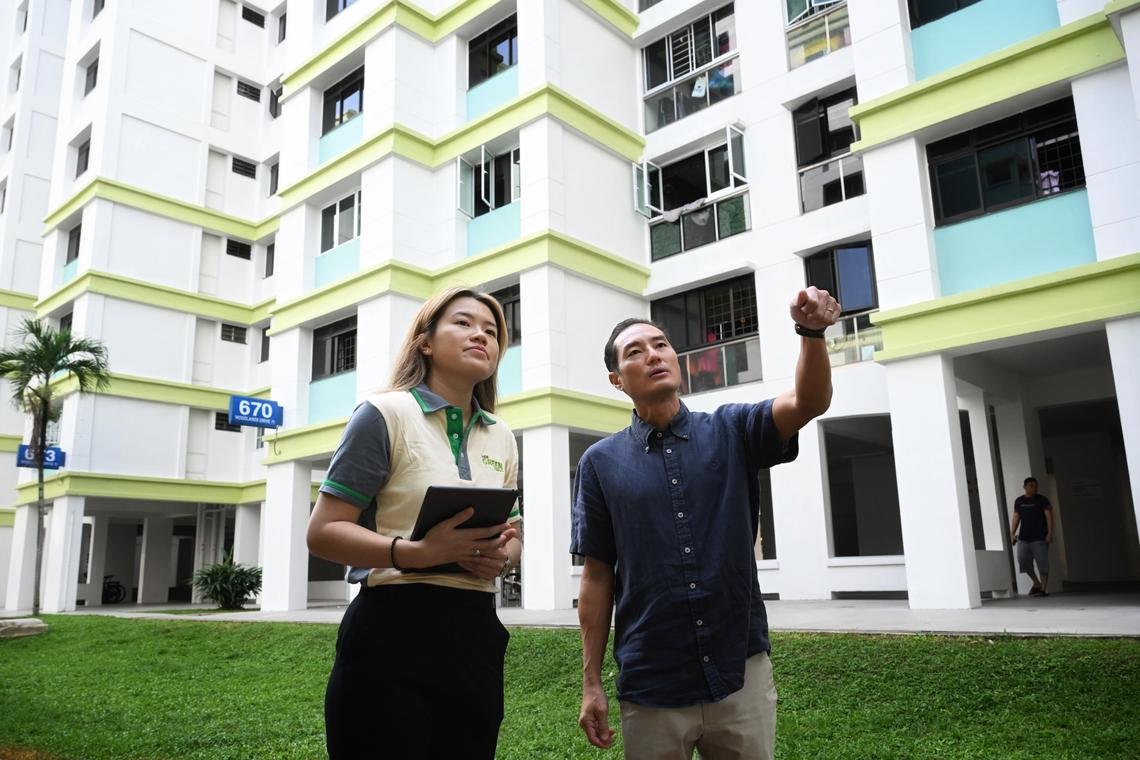In an effort to combat rising urban temperatures and improve residents’ comfort, Singapore has announced plans to extend the use of heat-reflective paint to all Housing & Development Board (HDB) estates by 2030. This initiative aligns with the nation’s broader sustainability goals and aims to create a cooler living environment for the public.
Addressing the Urban Heat Challenge
Singapore’s urban landscape, characterized by high-rise buildings and dense infrastructure, has been increasingly affected by the urban heat island (UHI) effect. This phenomenon occurs when heat is absorbed and retained by concrete structures, roads, and rooftops, leading to higher ambient temperatures, particularly in residential areas.
The use of heat-reflective paint is a proactive step towards mitigating this effect. The paint is designed to reflect a significant portion of sunlight, reducing heat absorption and subsequently lowering surface temperatures. Studies have shown that treated surfaces can be up to 5 degrees Celsius cooler compared to conventional painted surfaces, providing tangible benefits to residents.
Expansion of the Initiative
The project, initially trialed in selected HDB precincts, has demonstrated promising results. Encouraged by its effectiveness, the government now aims to roll out the initiative to all HDB estates within the next six years. The implementation will take place in phases, prioritizing areas with higher heat exposure.
HDB and relevant authorities will collaborate with contractors to ensure the seamless application of the paint across different housing blocks. The initiative will focus not only on rooftops but also on vertical surfaces that receive direct sunlight.
Benefits for Residents
The adoption of heat-reflective paint offers multiple advantages for residents, including:
- Enhanced Comfort: Lower surface temperatures will contribute to a cooler environment within residential buildings, improving overall living conditions.
- Energy Savings: Reduced heat absorption can lead to lower indoor temperatures, potentially decreasing the need for air conditioning and cutting energy costs for households.
- Sustainability Goals: This initiative aligns with Singapore’s Green Plan 2030, contributing to its long-term goal of creating a more sustainable and climate-resilient city.
Future Plans and Additional Measures
The heat-reflective paint initiative is part of a broader strategy to combat urban heat. Complementary efforts include the expansion of green spaces, increased tree planting, and the integration of smart cooling solutions in new housing developments. Authorities are also exploring other innovative cooling technologies that could further enhance thermal comfort in residential areas.
Residents will be kept informed about the rollout schedule, and feedback will be collected to assess the effectiveness of the initiative. Community engagement will be a key aspect, ensuring that the project meets the needs of those living in HDB estates.
Conclusion
With the planned nationwide implementation of heat-reflective paint across all HDB estates by 2030, Singapore is taking a significant step toward creating a cooler, more sustainable living environment. As the city-state continues to adapt to climate challenges, such initiatives will play a crucial role in enhancing urban resilience and improving the quality of life for its residents.





